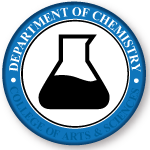Document Type
Monograph
Publication Date
2009
Publication Title
Anticancer Drugs: Design, Delivery and Pharmacology
Abstract
Chronic myelogenous leukemia (CML) is a disorder in which an excessive number of blood stem cells develop into the white blood cell group called granulocytes. The anticancer drug Busulfan is a cell cycle non-specific alkylating agent which is utilized to maintain white blood cell counts below 15000 cells/microliter. The side effects induced by busulfan are significant and affirms the intimation for new drug constructs. Fifteen analogous compounds were generated from the molecular structure of busulfan . These compounds retain the double methanesulfonate functional groups descriptive of this class of alkylating anticancer drugs. However, the carbon chain substituent separating the methanesulfonate is highly modified in order to allow significant changes in drug properties that may produce favorable characteristics that benefit clinical application. Important properties such as Log P, polar surface area, formula weight, molecular volume, Log BB, and violations of the Rule of 5 were determined to ascertain similarities and differences. All fifteen analog compounds retained zero violations of the Rule of 5, which suggests favorable properties for useful drug availability. Values of Log BB and BB remained the same throughout at -0.841 and 0.144, respectively. In addition, values of polar surface area and number of oxygens and nitrogens remained the same throughout at 86.752 A3 and 6, respectively. However, formula weight, number of atoms, number of rotatable bonds varied significantly with Log P varying across a broad range (-0.428 to 2.734). The variance in Log P within this group of methane sulfonate compounds allows new and potentially highly beneficial pharmacological properties for clinical application. Pattern recognition techniques such as cluster analysis, non-metric multidimensional scaling, discriminant analysis, and K-means cluster analysis discerned underlying relationships within this group of anticancer drugs and to the parent busulfan. This work shows that pattern recognition methods combined with molecular modeling can discover and elucidate novel drug designs for the clinical treatment of CML.
Recommended Citation
Bartzatt, R. (2009). Chapter VI: Design of novel anticancer drugs utilizing Busulfan for optimizing pharmacological properties and pattern recognition techniques for elucidation of clinical efficacy. In Spencer, P. & Holt, W. (Eds). Anticancer Drugs: Design, Delivery and Pharmacology. Nova Science Publishers, Inc.: Hauppauge, NY.


Comments
This is Chapter VI in Anticancer Drugs: Design, Delivery, and Pharmacology edited by Peter Spencer and Watler Holt.. Publisher has granted permission to the University of Nebraska at Omaha, Criss Library to deposit this chapter into our online Institutional Repository. Copyright is held by Publisher. The book can be found at the Nova Science Publisher’s site at https://novapublishers.com/shop/ ISBN 978-1-60741-004-1